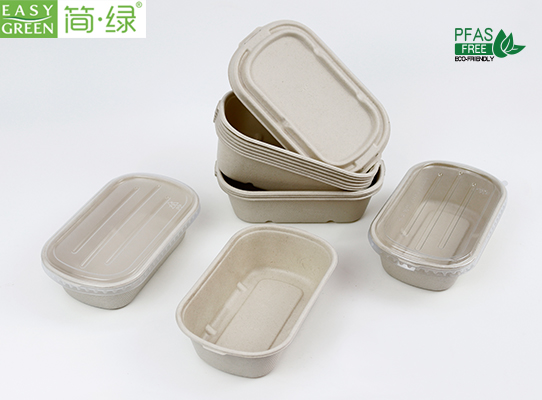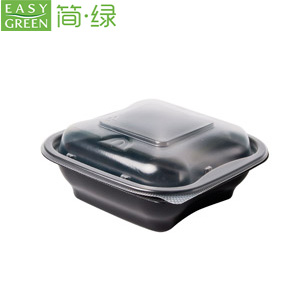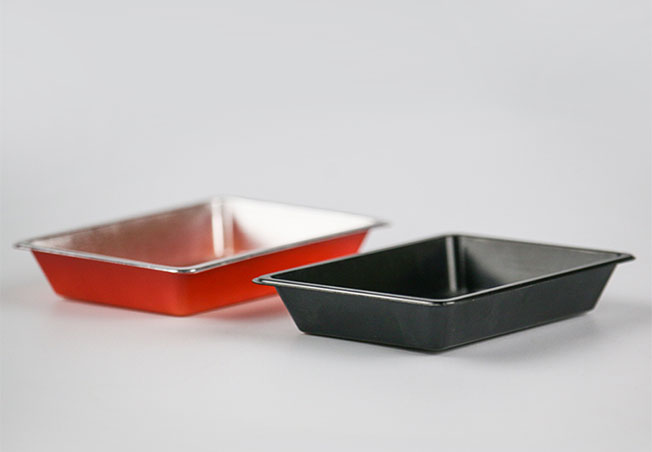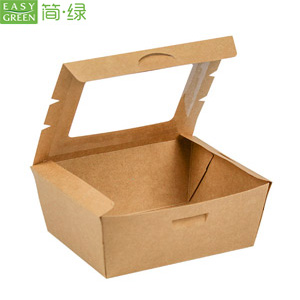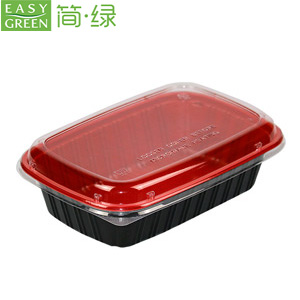With the development of economic life and people's increasing spiritual needs, the diet has been renewed in recent years. We are struggling with the problem of "eating" every day, shuttling around various ordering platforms, and waiting for takeaway at home. Takeaway ordering has become a ubiquitous phenomenon. Do you know the types and differences of the disposable fast food boxes you get?
According to the big data investigation, the fast food boxes on the market are roughly divided into disposable plastic packaging boxes, disposable paper boxes, and disposable environmentally friendly wholesale food boxes.
Disposable plastic boxes
Disposable plastic boxes can be divided into foamed plastic boxes and PP plastic boxes due to the differences in the main components added.
Disposable foamed plastic boxes are made of polystyrene resin as the main material. After being heated and melted in an extruder, a foaming agent (butane) is added, and then extruded and stretched into sheets. The sheet is rolled up and placed in a ventilated and humid environment for secondary heating and vacuum forming to create various boxes. Because of its advantages of insulation, pressure resistance, and low cost, it is widely used. However, due to the irreversible damage it causes to the environment, the term "white pollution" has become a hot topic. The harm of disposable foamed boxes is that when the temperature of the food contained in the foamed plastic box exceeds 65 degrees, it will release toxic substances such as bisphenol A. Bisphenol A is an organic chemical raw material that is not easily decomposed by the digestive system and can cause bodily harm.
PP plastic boxes are made of polypropylene and have good heat resistance. They do not release toxic substances when used to contain hot food, provided that food-grade PP materials are used. If the PP plastic used has a strong odor, it is a poor-quality product and may be toxic. PP boxes are generally transparent, non-toxic and harmless, and are often seen on disposable fast food boxes.
Disposable paper fast food boxes
The raw materials of paper boxes are mostly pulp or wood pulp, and they need to be pressed and formed to obtain finished products. Paper boxes themselves do not have waterproof and oil-proof functions. For example, the leather card soup bucket and disposable paper cup we often use need to be coated with plastic on the inner wall of the tableware to achieve a non-leakage effect. However, when the plastic coating is exposed to hot water or hot food, it will release toxic chemicals, which reduces the use of plastics to a certain extent but does not reduce the harm to the human body.
At the same time, paper lunch boxes mostly use wood pulp, which may involve tree felling and forest destruction in the papermaking process. Large amounts of wastewater are also generated during the deep processing of wood pulp, which causes environmental pollution and does not conform to the concept of sustainable green development.
Biodegradable environmentally friendly food packaging materials
The biggest difference between wholesale compostable packaging materials and other fast food boxes is that they can be biodegraded and the materials used can be recycled.
There are also two types of biodegradable food boxes, partially degradable and fully degradable. Partially degradable lunch boxes generally refer to cornstarch-based lunch boxes, which are made of corn, cassava and other raw materials obtained through chemical methods of polymer - PLA. The characteristics are no harmful substances, waterproof and oil-proof, partially degradable, and more environmentally friendly than traditional lunch boxes. Corn starch lunch boxes are real or fake from the colour and smell in two aspects, whitish lunch boxes may have added some bleach and talcum powder and other additives because the corn starch lunch boxes themselves are yellowish in colour and smell like corn plant fragrance.
Full degradation of eco friendly food packaging wholesale materials meal boxes from biodegradable food containers manufacturer generally refers to straw, reeds, sugar cane, bamboo and other plant fiber as raw materials in the natural environment under the action of microorganisms (bacteria, mold, algae) enzymes, biochemical reactions, causing the appearance of mold to the internal quality changes, and ultimately the formation of carbon dioxide and water meal boxes. Easy to use, light quality, in the deep processing of food-grade waterproof and oil-proof additives used to prevent penetration. In addition to the above features and differences, the cost of biodegradable lunch boxes is relatively high, of course, with the development of the economy and environmental protection lunch boxes in the future after a large number of needs, biodegradable environmentally friendly food packaging materials lunch boxes may become the main force of disposable environmentally friendly tableware
 English
English 
